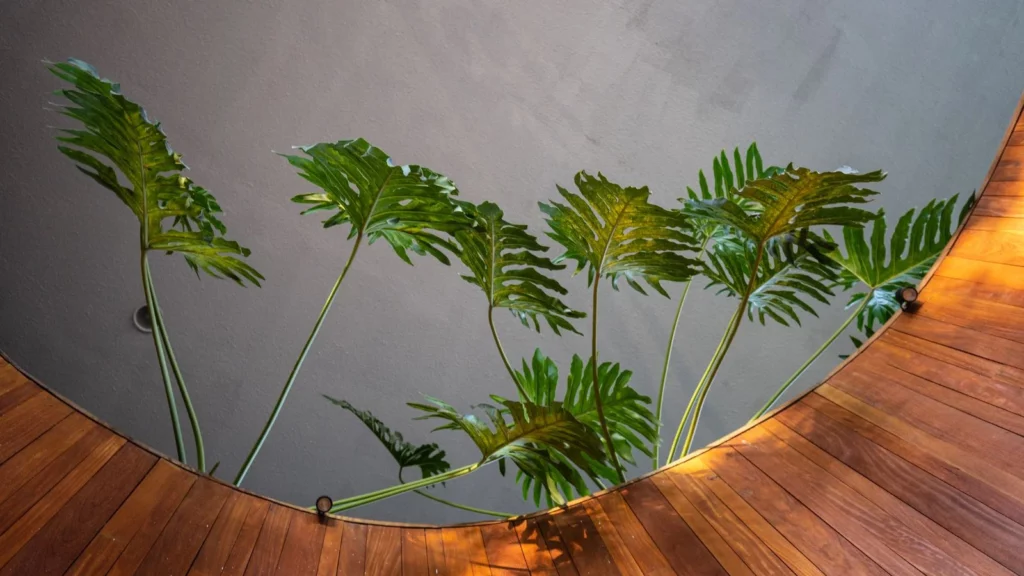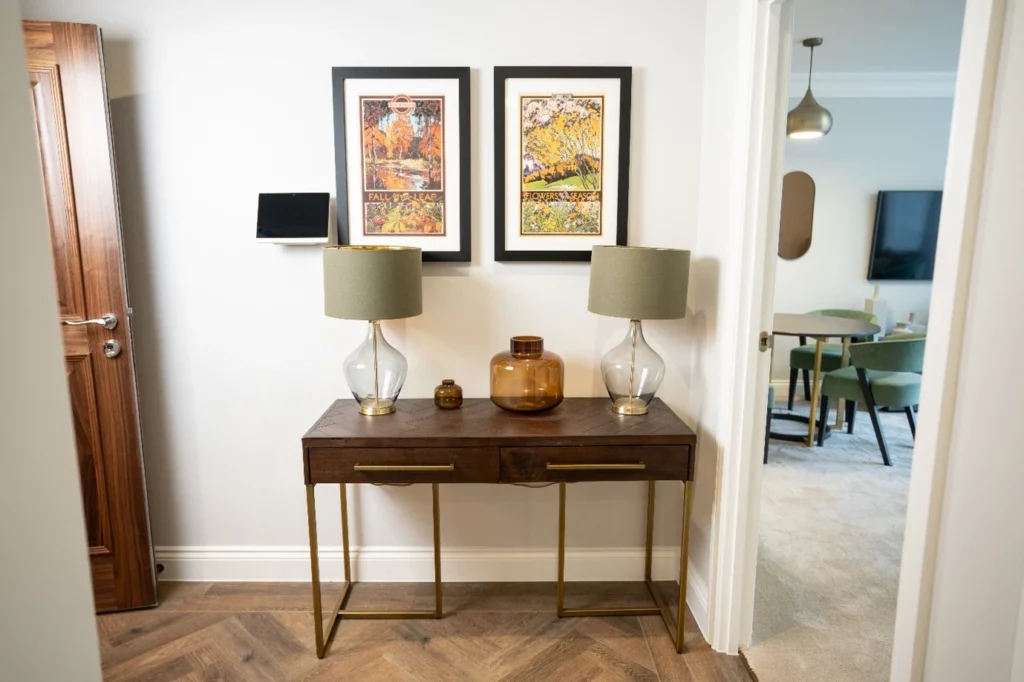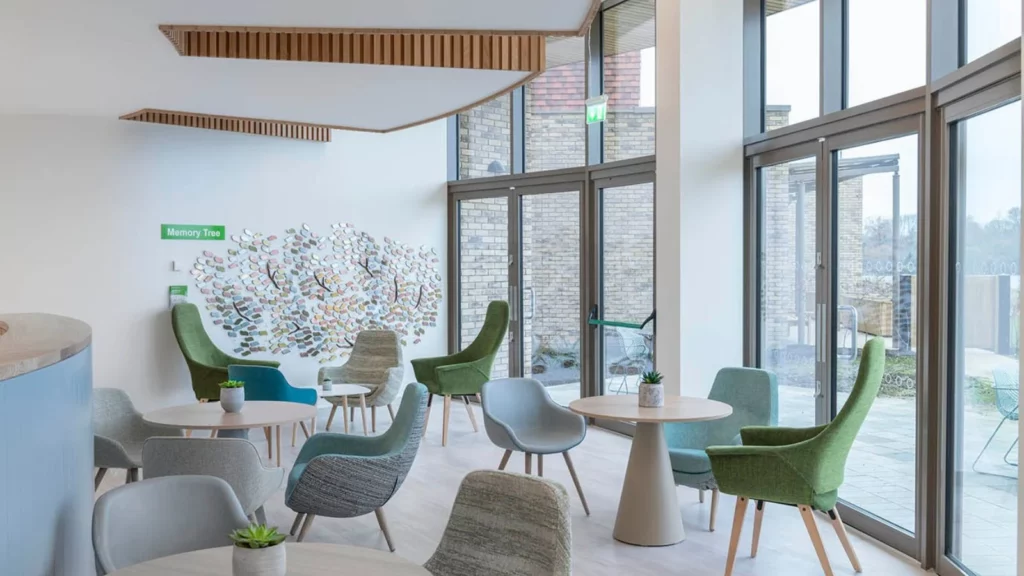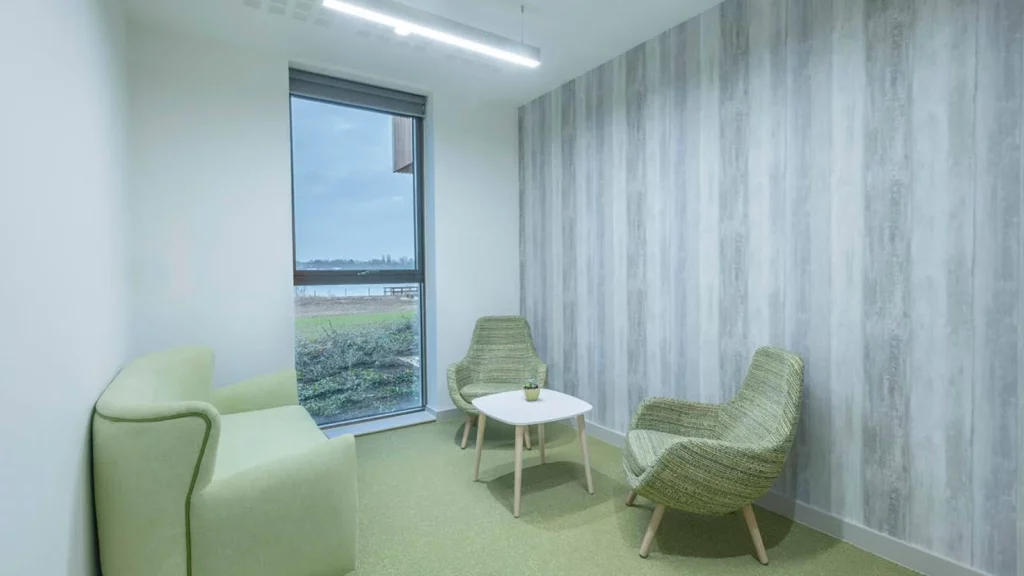A guide to biophilic design in care homes
In the realm of care homes, where physical and mental well-being are of paramount importance, biophilic design has emerged as a transformative approach. By integrating elements of nature into a built environment, biophilic design creates spaces that support the health and happiness of both care home residents and staff.
In this guide, we will explore the practical strategies of incorporating biophilic design principles into care homes, highlighting how this approach to interior design can create a harmonious and enriching living environment for all.
What is Biophilic Design?
The term ‘biophilia’ refers to the hypothesis that humans have a desire to interact with and connect with nature. As the world becomes increasingly urbanised, people are experiencing a lack of nature in their everyday life, whether that is through their work or living in built-up towns and cities.
Interacting with nature is necessary for people’s physical and mental health, fitness, and wellbeing. In fact, one study found that 95% of people experienced improved mood after spending time outside, moving from depressed and anxious to calm and balanced.
With that in mind, it is no surprise to see more health environments move towards biophilic design, a process of bringing natural elements into interior spaces and mimicking natural patterns to dictate the aesthetic.

How can it be incorporated into a care home?
Implementing biophilic design principles in care homes involves thoughtful planning and execution. It can vary from simple additions such as skylights to bring in natural light, to putting up living walls in reception areas, covered with living greenery.
To help you incorporate biophilic design into your care home, scroll below to see a couple of practical solutions for you to implement.
Use Natural Materials
Biophilic designers always gravitate towards natural materials, such as wood and stone over synthetic materials like plastics or polished metals. As a result, many care homes are featuring these natural surfaces in their choices of furniture and overall aesthetics, from linens for fabrics to natural woods for tables and chairs.
When working with interior designers, we have found this concept becoming more of the norm. This is particularly true with materials such as leather, which is easy to clean, making it perfect for a care home environment to enhance infection prevention.

Use natural materials like wood and stone for furniture and feature pieces.
Nature Sounds and Scents
One of the simplest changes you can make to bring nature into your care home design is complementing your visual experience of nature with a nonvisual one. You can do this by bringing in natural scents, using candles or an essential oil diffuser, or selecting plants with pleasant scents, such as jasmine, gardenia, or chamomile, and place them strategically in communal areas or residents’ rooms.
To promote calmness and serenity, nature-inspired soundscapes can be added throughout your care home. Whether it is installing indoor water features, such as fountains and cascading water walls, or playing recorded nature sounds, such as birdsong or ocean waves, you can create a relaxing auditory backdrop to enhance the care and living experience of residents, their families and care staff.

Create a relaxing auditory backdrop with the use of features like a water fountain
Maximise Natural Light
By incorporating large windows, skylights, and lightwells, you can significantly increase access to natural light for residents and staff. No only will this improve residents’ well-being, it can also reduce energy consumption.
If you don’t have the ability to increase natural light, look at creating a dynamic lighting scheme with different elements of diffuse light. This provides a much softer ambience to harsh overhead lighting.
Another option to consider is to optimise views of outdoor green spaces and create connections between indoor and outdoor areas. Use transparent or open designs with large windows and skylights to blur the boundaries, allowing residents to enjoy the beauty of nature from various parts of the care home.

Use large windows to bring in lots of natural light into your care environment.
Mimic Natural Patterns
Biophilic design employs biomimicry, a process of mimicking patterns and forms found in nature. Adding patterns that mimic nature, such as using wallpaper or fabrics with wave-like geometries or framing windows in a honeycomb pattern, is an easy way to incorporate biophilic design in indoor spaces.
In care environments, it is important to stay clear of sharp lines in case a resident has a fall, as it is far safer to have pieces of furniture that have curved edges as opposed to those with sharp points. With nature and the outdoors becoming increasingly prominent in interior design for care settings, it is easy to see why sculptural and curved designs for furniture are a must-have for new care homes and retirement villages.
Furthermore, the use of curved walls and tiles is essential to create form, which is hugely important with wayfinding in a home, helping those with dementia or limited visibility to differentiate which room they are in.

Use of natural patterns on wall paper and curved furniture all support biomimicry.
Summary
Following the impact of lockdowns imposed by Covid-19, we all have a need to have a greater connection with nature and the outdoors, helping to improve our wellbeing and relaxation. As a result, care homes and other carer environments are increasingly looking to use biophilic design wherever they can when building or refurbishing their facilities.
To help you make the process as easy as possible, this blog has put together a few practical ideas to support you through this journey, ensuring you have an environment that has a positive impact on residents and staff.
If you would like more information and advice on interior design, book a free consultation with one of our advisors using the form below.
We think you might also be interested in...
Can we help with anything?
Be sure to use the contact form and reach out to us if you have any questions about the content above.